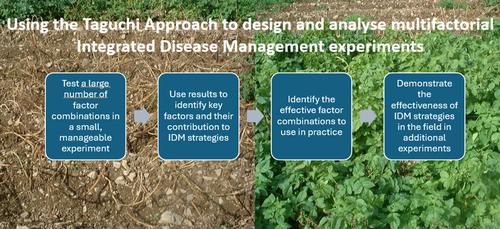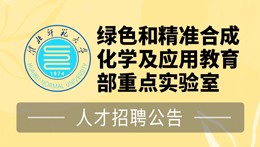当前位置:
X-MOL 学术
›
Pest Manag. Sci.
›
论文详情
Our official English website, www.x-mol.net, welcomes your
feedback! (Note: you will need to create a separate account there.)
Testing the Taguchi method to design and analyze integrated disease management strategies, for the control of late blight (Phytophthora infestans) on potato
Pest Management Science ( IF 3.8 ) Pub Date : 2025-01-10 , DOI: 10.1002/ps.8629
Faye Ritchie, Laura Sapelli, Julie A Smith, Neil D Paveley, Alison K Lees, Ruairidh A Bain, James M Ritchie
Pest Management Science ( IF 3.8 ) Pub Date : 2025-01-10 , DOI: 10.1002/ps.8629
Faye Ritchie, Laura Sapelli, Julie A Smith, Neil D Paveley, Alison K Lees, Ruairidh A Bain, James M Ritchie

|
BACKGROUNDIdentifying robust integrated pest management (IPM) strategies requires the testing of multiple factors at the same time and assessing their combined effects e.g., on disease control. This makes field‐based experiments large, resource intensive and expensive. Hence, there are limits to the number of treatment combinations that can be practically tested under field conditions. Taguchi approach to design of experiments (DOE) or the Taguchi approach is commonly employed to enhance the quality of industrial products. It uses smaller experiments than classical DOE but its applicability to late blight research, and agricultural research, has not been widely evaluated.RESULTSTwo existing datasets, following the same protocol and investigating the effectiveness of different IPM treatments to control late blight, caused by Phytophthora infestans , on potato, were used to test the Taguchi approach. Disease severity was quantified as area under the disease progress curve (AUDPC). The method could accurately predict the performance of a cultivar and fungicide‐based integrated disease management strategy from a small dataset and identified cultivar as a key factor for disease control. Linear regression demonstrated a strong and statistically significant relationship between AUDPC values collected during the original experiments and the predicted disease severity values generated using the Taguchi method.CONCLUSIONSThe Taguchi approach can accurately predict disease severity, with predicted values similar to those collected during the original experiments. Moreover, associated analyses identified the most effective treatment combinations and the factors that exert the greatest influence on disease control. The relevance of this approach when designing and interpreting IPM strategies is discussed. © 2025 Society of Chemical Industry.
中文翻译:

测试田口方法以设计和分析综合病害管理策略,以控制马铃薯上的晚疫病(致病疫霉)
背景确定稳健的有害生物综合治理 (IPM) 策略需要同时测试多个因素并评估它们的综合影响,例如对疾病控制的影响。这使得现场实验规模大、资源密集且成本高昂。因此,可以在现场条件下实际测试的处理组合的数量是有限的。田口实验设计法 (DOE) 或田口方法通常用于提高工业产品的质量。它使用的实验比经典的 DOE 小,但其对晚疫病研究和农业研究的适用性尚未得到广泛评估。结果两个现有的数据集,遵循相同的方案,并调查不同 IPM 处理对控制马铃薯上由致病疫霉引起的晚疫病的有效性,用于测试田口方法。疾病严重程度被量化为疾病进展曲线下面积 (AUDPC)。该方法可以从小型数据集中准确预测基于品种和杀菌剂的综合疾病管理策略的性能,并确定品种是疾病控制的关键因素。线性回归表明,在原始实验期间收集的 AUDPC 值与使用 Taguchi 方法生成的预测疾病严重程度值之间存在很强且具有统计学意义的关系。结论田口方法可以准确预测疾病的严重程度,预测值与原始实验中收集的值相似。此外,相关分析确定了最有效的治疗组合和对疾病控制影响最大的因素。 讨论了这种方法在设计和解释 IPM 策略时的相关性。© 2025 化工学会.
更新日期:2025-01-10
中文翻译:

测试田口方法以设计和分析综合病害管理策略,以控制马铃薯上的晚疫病(致病疫霉)
背景确定稳健的有害生物综合治理 (IPM) 策略需要同时测试多个因素并评估它们的综合影响,例如对疾病控制的影响。这使得现场实验规模大、资源密集且成本高昂。因此,可以在现场条件下实际测试的处理组合的数量是有限的。田口实验设计法 (DOE) 或田口方法通常用于提高工业产品的质量。它使用的实验比经典的 DOE 小,但其对晚疫病研究和农业研究的适用性尚未得到广泛评估。结果两个现有的数据集,遵循相同的方案,并调查不同 IPM 处理对控制马铃薯上由致病疫霉引起的晚疫病的有效性,用于测试田口方法。疾病严重程度被量化为疾病进展曲线下面积 (AUDPC)。该方法可以从小型数据集中准确预测基于品种和杀菌剂的综合疾病管理策略的性能,并确定品种是疾病控制的关键因素。线性回归表明,在原始实验期间收集的 AUDPC 值与使用 Taguchi 方法生成的预测疾病严重程度值之间存在很强且具有统计学意义的关系。结论田口方法可以准确预测疾病的严重程度,预测值与原始实验中收集的值相似。此外,相关分析确定了最有效的治疗组合和对疾病控制影响最大的因素。 讨论了这种方法在设计和解释 IPM 策略时的相关性。© 2025 化工学会.































 京公网安备 11010802027423号
京公网安备 11010802027423号